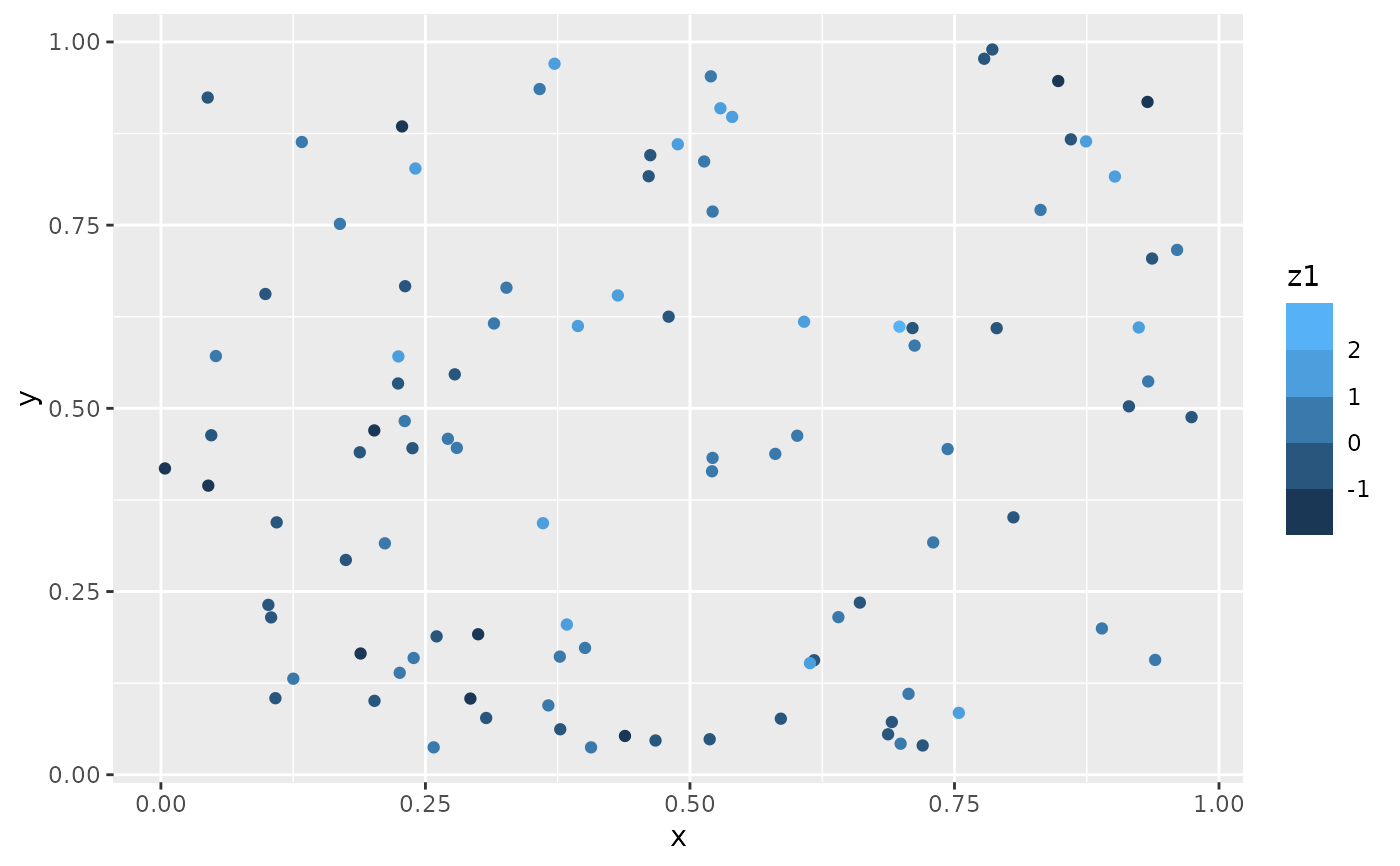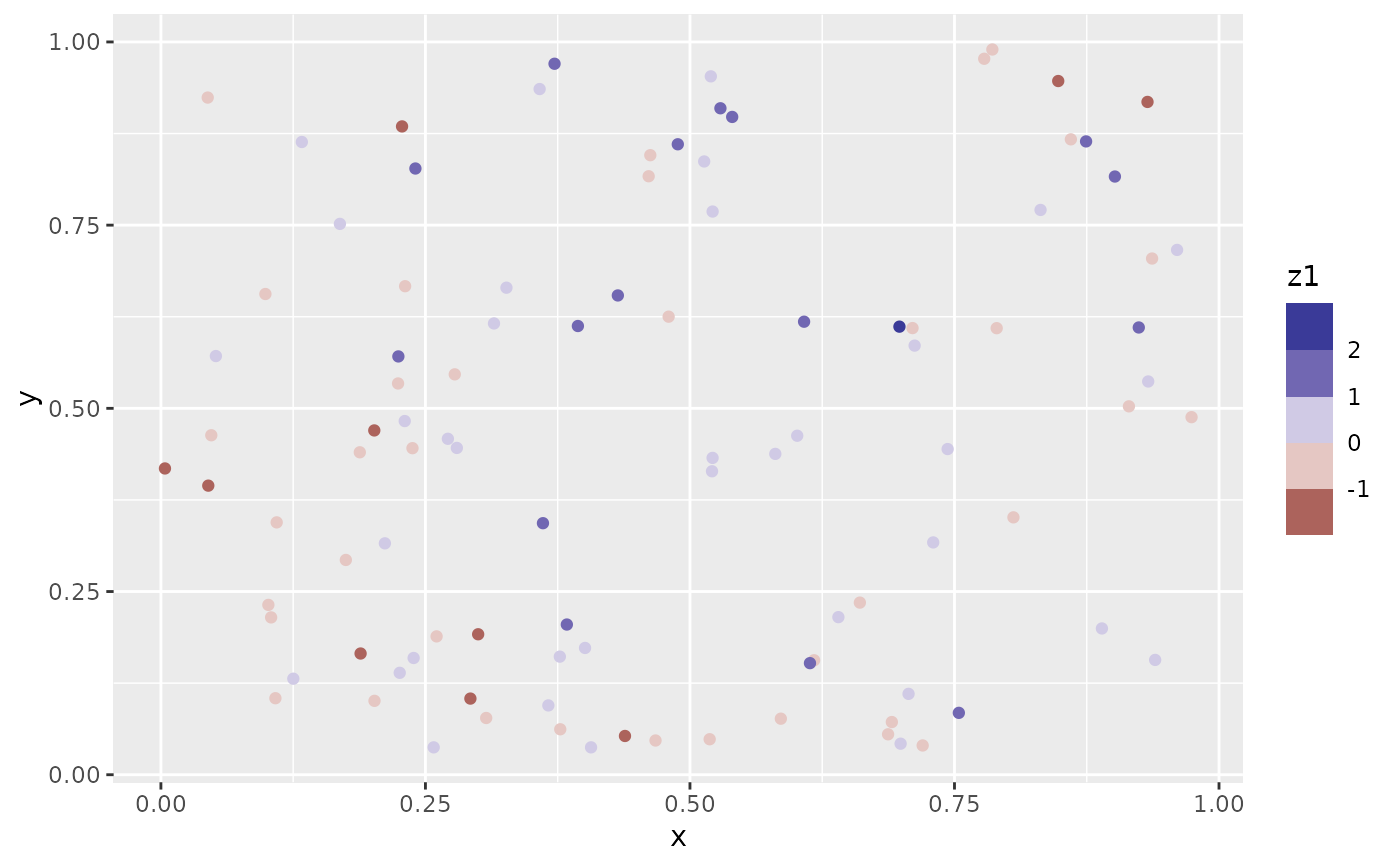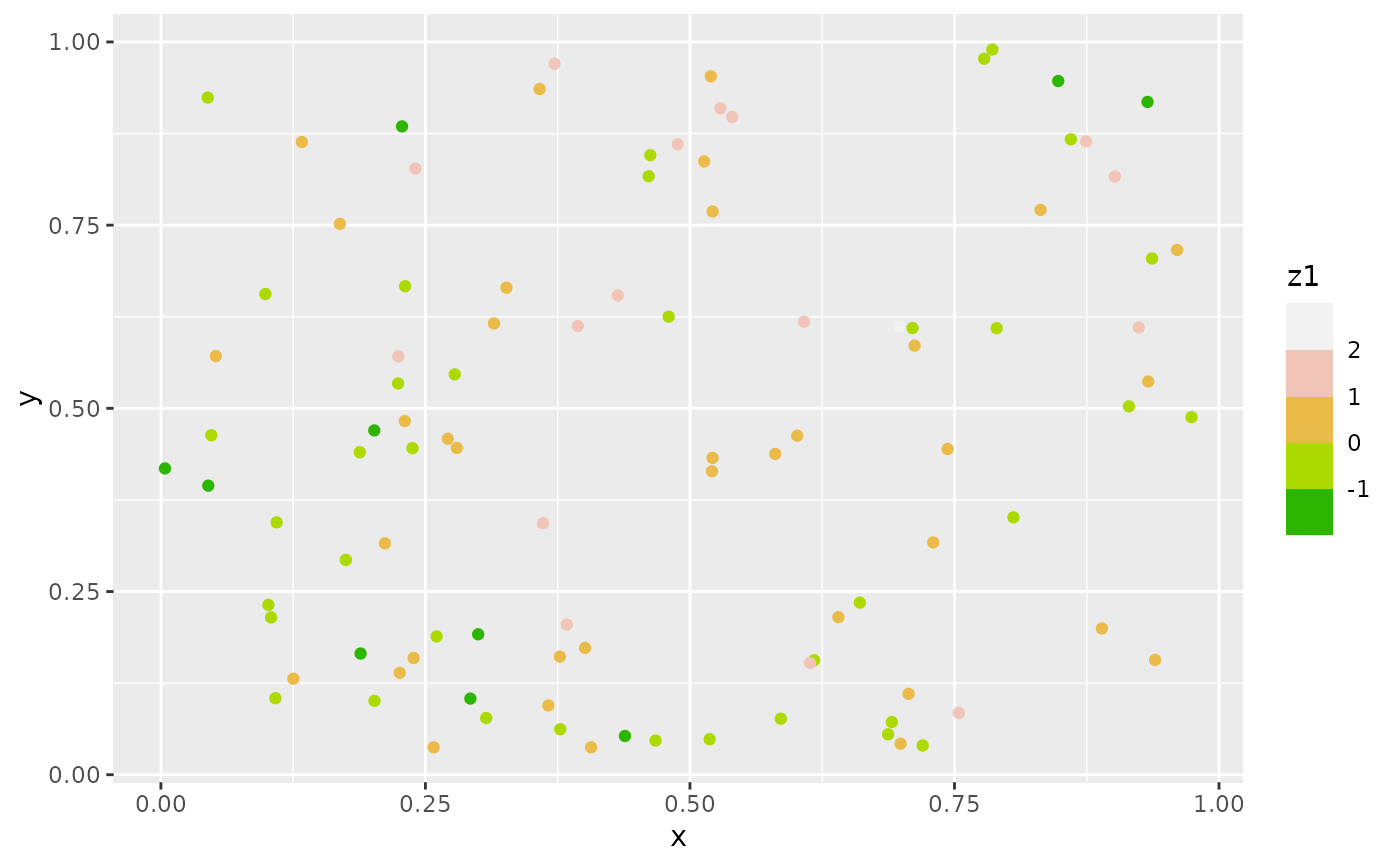scale_*_steps creates a two colour binned gradient (low-high),
scale_*_steps2 creates a diverging binned colour gradient (low-mid-high),
and scale_*_stepsn creates a n-colour binned gradient. These scales are
binned variants of the gradient scale family and
works in the same way.
scale_colour_steps( ..., low = "#132B43", high = "#56B1F7", space = "Lab", na.value = "grey50", guide = "coloursteps", aesthetics = "colour" ) scale_colour_steps2( ..., low = muted("red"), mid = "white", high = muted("blue"), midpoint = 0, space = "Lab", na.value = "grey50", guide = "coloursteps", aesthetics = "colour" ) scale_colour_stepsn( ..., colours, values = NULL, space = "Lab", na.value = "grey50", guide = "coloursteps", aesthetics = "colour", colors ) scale_fill_steps( ..., low = "#132B43", high = "#56B1F7", space = "Lab", na.value = "grey50", guide = "coloursteps", aesthetics = "fill" ) scale_fill_steps2( ..., low = muted("red"), mid = "white", high = muted("blue"), midpoint = 0, space = "Lab", na.value = "grey50", guide = "coloursteps", aesthetics = "fill" ) scale_fill_stepsn( ..., colours, values = NULL, space = "Lab", na.value = "grey50", guide = "coloursteps", aesthetics = "fill", colors )
Arguments
| ... | Arguments passed on to
|
|---|---|
| low | Colours for low and high ends of the gradient. |
| high | Colours for low and high ends of the gradient. |
| space | colour space in which to calculate gradient. Must be "Lab" - other values are deprecated. |
| na.value | Colour to use for missing values |
| guide | Type of legend. Use |
| aesthetics | Character string or vector of character strings listing the
name(s) of the aesthetic(s) that this scale works with. This can be useful, for
example, to apply colour settings to the |
| mid | colour for mid point |
| midpoint | The midpoint (in data value) of the diverging scale. Defaults to 0. |
| colours | Vector of colours to use for n-colour gradient. |
| values | if colours should not be evenly positioned along the gradient
this vector gives the position (between 0 and 1) for each colour in the
|
| colors | Vector of colours to use for n-colour gradient. |
Details
Default colours are generated with munsell and
mnsl(c("2.5PB 2/4", "2.5PB 7/10")). Generally, for continuous
colour scales you want to keep hue constant, but vary chroma and
luminance. The munsell package makes this easy to do using the
Munsell colour system.
See also
scales::seq_gradient_pal() for details on underlying
palette, scale_colour_gradient() for continuous scales without binning.
Other colour scales:
scale_alpha(),
scale_colour_brewer(),
scale_colour_continuous(),
scale_colour_gradient(),
scale_colour_grey(),
scale_colour_hue(),
scale_colour_viridis_d()
Examples
df <- data.frame( x = runif(100), y = runif(100), z1 = rnorm(100) ) # Use scale_colour_steps for a standard binned gradient ggplot(df, aes(x, y)) + geom_point(aes(colour = z1)) + scale_colour_steps()# Get a divergent binned scale with the *2 variant ggplot(df, aes(x, y)) + geom_point(aes(colour = z1)) + scale_colour_steps2()# Define your own colour ramp to extract binned colours from ggplot(df, aes(x, y)) + geom_point(aes(colour = z1)) + scale_colour_stepsn(colours = terrain.colors(10))


